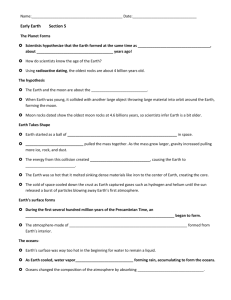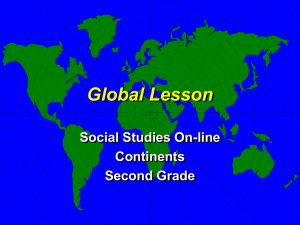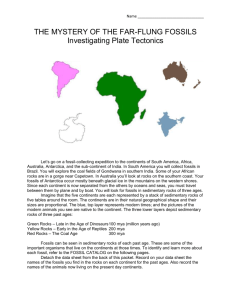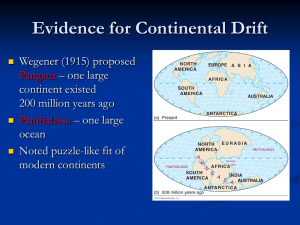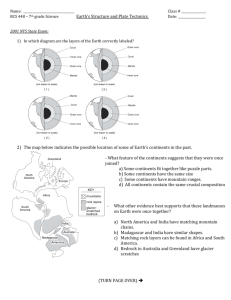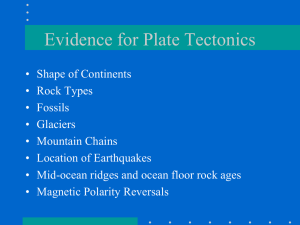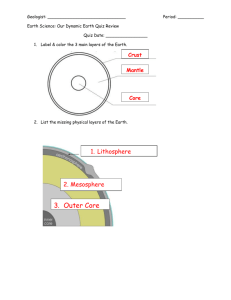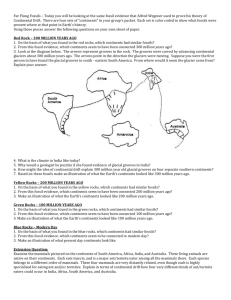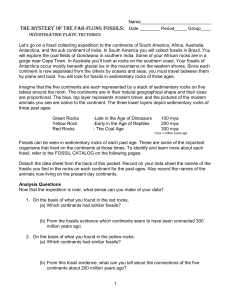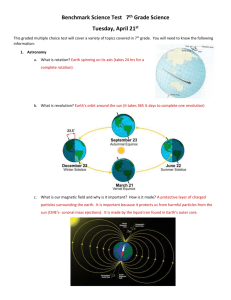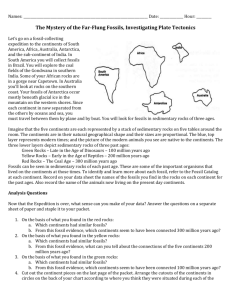Continental Drift Evidence
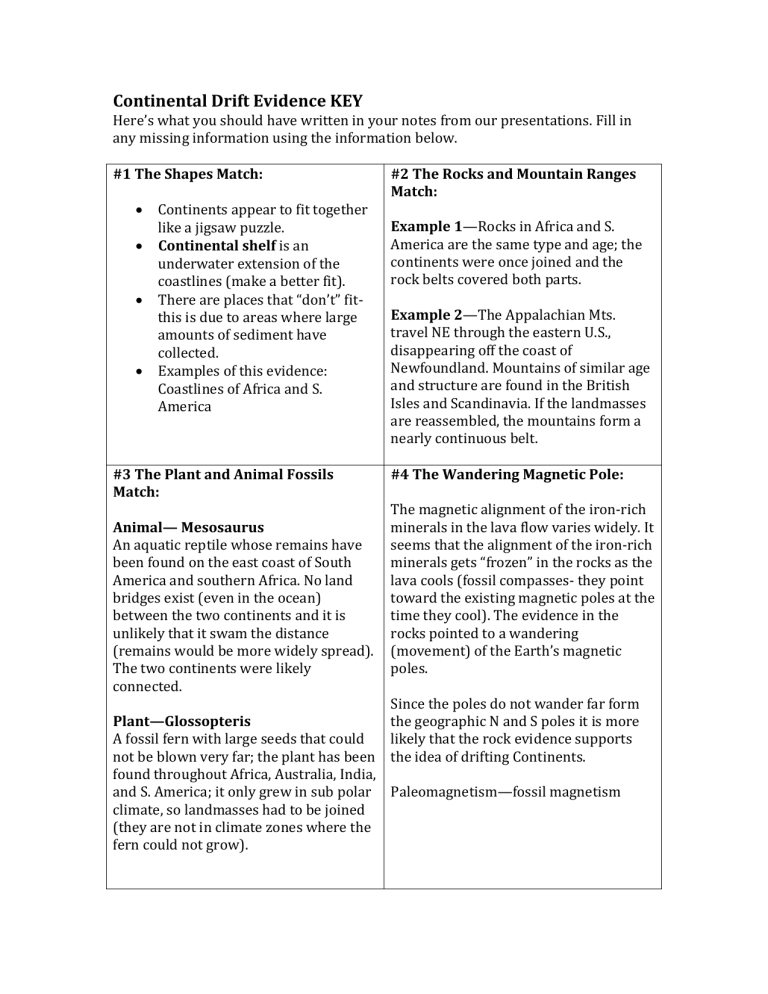
Continental Drift Evidence KEY
Here’s what you should have written in your notes from our presentations. Fill in any missing information using the information below.
#1 The Shapes Match:
Continents appear to fit together like a jigsaw puzzle.
Continental shelf is an underwater extension of the coastlines (make a better fit).
There are places that “don’t” fit- this is due to areas where large amounts of sediment have collected.
Examples of this evidence:
Coastlines of Africa and S.
America
#3 The Plant and Animal Fossils
Match:
Animal— Mesosaurus
An aquatic reptile whose remains have been found on the east coast of South
America and southern Africa. No land bridges exist (even in the ocean) between the two continents and it is unlikely that it swam the distance
(remains would be more widely spread).
The two continents were likely connected.
Plant—Glossopteris
A fossil fern with large seeds that could not be blown very far; the plant has been found throughout Africa, Australia, India, and S. America; it only grew in sub polar climate, so landmasses had to be joined
(they are not in climate zones where the fern could not grow).
#2 The Rocks and Mountain Ranges
Match:
Example 1—Rocks in Africa and S.
America are the same type and age; the continents were once joined and the rock belts covered both parts.
Example 2—The Appalachian Mts. travel NE through the eastern U.S., disappearing off the coast of
Newfoundland. Mountains of similar age and structure are found in the British
Isles and Scandinavia. If the landmasses are reassembled, the mountains form a nearly continuous belt.
#4 The Wandering Magnetic Pole:
The magnetic alignment of the iron-rich minerals in the lava flow varies widely. It seems that the alignment of the iron-rich minerals gets “frozen” in the rocks as the lava cools (fossil compasses- they point toward the existing magnetic poles at the time they cool). The evidence in the rocks pointed to a wandering
(movement) of the Earth’s magnetic poles.
Since the poles do not wander far form the geographic N and S poles it is more likely that the rock evidence supports the idea of drifting Continents.
Paleomagnetism—fossil magnetism
#5 Glacial Striations:
An ice sheet covered parts of South
America, southern Africa, India, and southern Australia, 300 million years ago.
Glacial striations (scratches on rocks),
varves (sediment carried by glacial melt water), and tillites (rocks and pebbles pushed forward by moving glaciers) indicate that the continents must have been joined prior to the “opening up” of the Atlantic Ocean.
#6 Ancient Climates:
There is evidence of glaciers during the
Paleozoic era. This evidence lies within
30° of the equator (subtropical and tropical climate). It is unlikely that ice sheets were able to form in this region.
Swamp areas that are now coal fields in the Northern Hemisphere indicate that those regions were once tropical as they were able to sustain lush vegetation.
